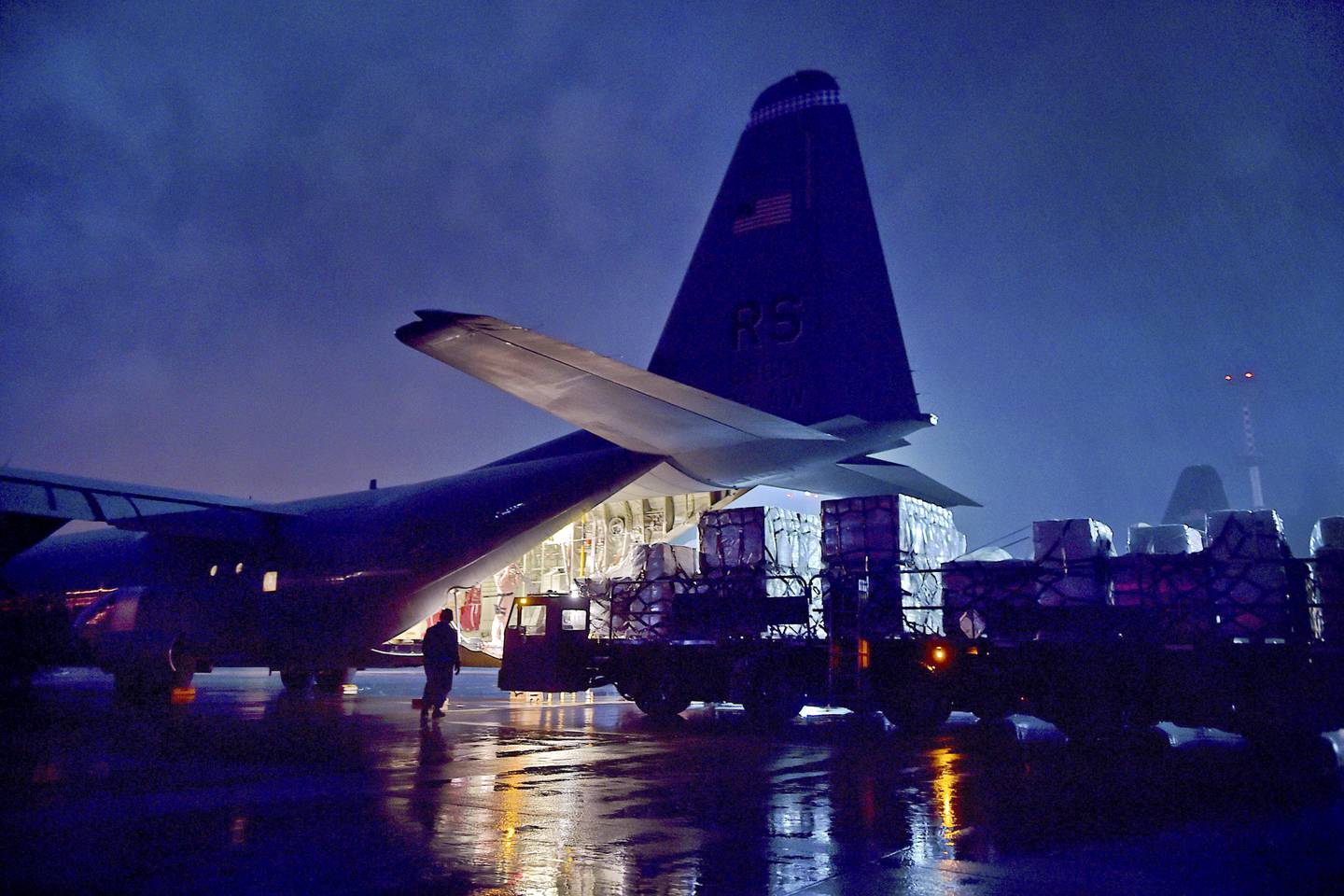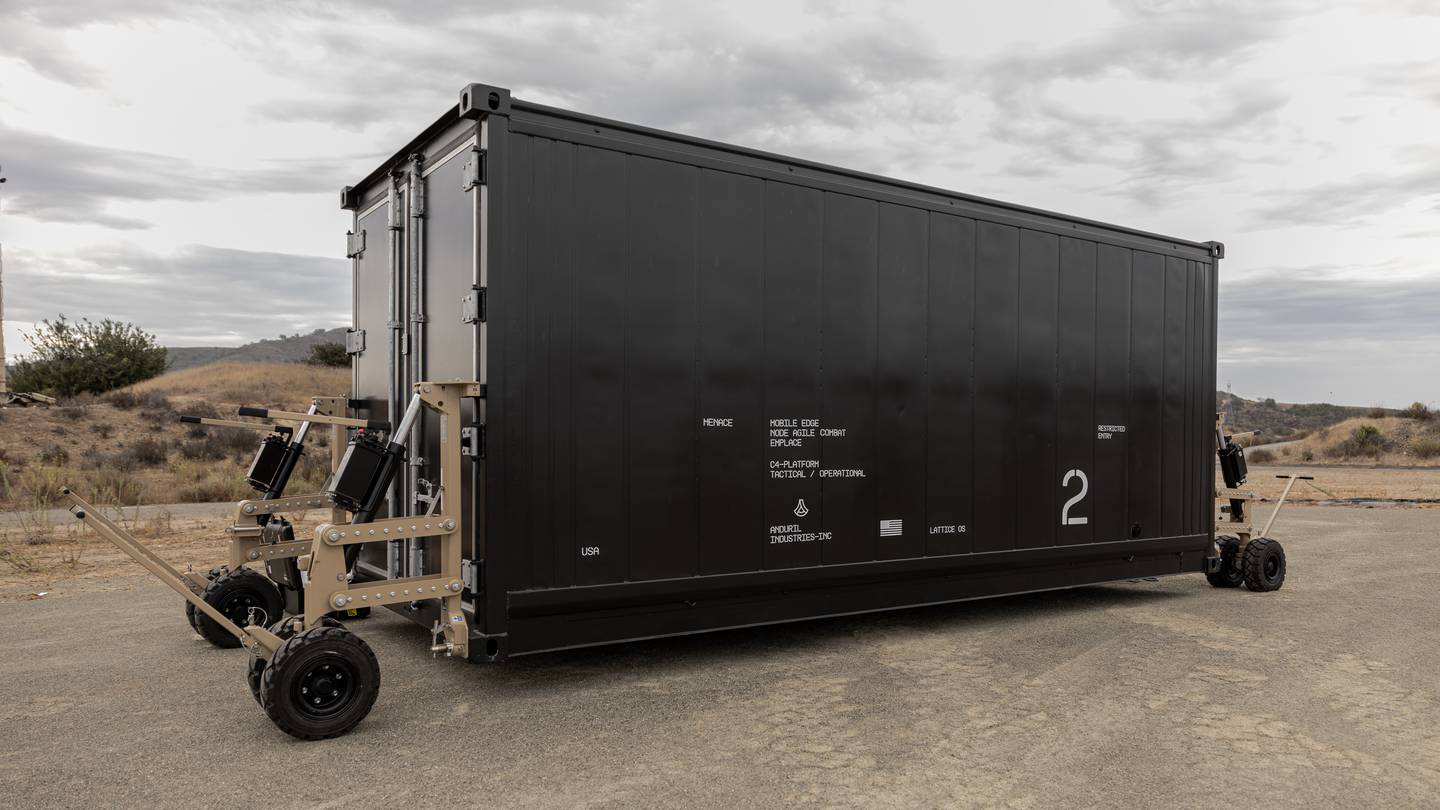WASHINGTON — Anduril Industries on Thursday announced a new command-and-control center that military forces could deploy to austere bases in rough environments and set up in about 10 minutes.
The system, dubbed Menace, is an expeditionary command, control, communications and computing platform that would allow commanders to plan and execute missions at locations around the world.
Anduril, a defense and security technology firm based in California, said the product could support the U.S. Air Force’s Agile Combat Employment effort. If a war erupts, that initiative would see the Air Force’s deployed forces spread out from centralized air bases and instead use a dispersed network of bases throughout a region.
The Air Force believes this concept would be particularly useful in the Indo-Pacific during a war against China, which has advanced capabilities to strike American allies’ bases, because the battlefield would take up a wide area.
Dispersing forces is intended to make it harder for an advanced adversary, such as China, to knock out a large portion of the Air Force’s airmen and aircraft with a single attack, the service has said. Agile Combat Employment could include partner nation’s military airfields, local civilian airports and austere bases set up by the U.S. in the field.
Anduril said users of Menace, in its 20-foot container configuration, can load the platform almost entirely intact into a single C-130 transport aircraft, fly it to a base and then quickly set it up. Once it is unloaded from the plane and put into place, two people can construct it and make it fully operational within 10 minutes, Anduril said.’=

Menace could serve as an expeditionary operations center, with a handful of computer stations inside allowing battlefield commanders to track where friendly and enemy forces are at any time, and then issue orders to their troops, Zachary Mears, head of strategy for Anduril, said in a Wednesday interview. Commanders could also manage base defense and security, counter-drone efforts, and maintenance and logistics using Menace, according to the company.
Mears said Menace was designed to be “software agnostic” to allow for the integration of a variety of mission planning tools and communications protocols. He added that Anduril envisions Menace as working with the military’s Joint All-Domain Command and Control concept for battlefield communications.
Anduril also said Menace would use commercial proliferated low-Earth orbit and military medium-Earth orbit satellite communications, as well as high-frequency communications pathways. It is secure and capable of handling classified mission planning, and can act as a secure compartmented information facility, Anduril said.
Menace is also equipped with a heating, ventilation and air conditioning system to allow for a comfortable workspace even in environments with extreme temperatures, Anduril said. Mears said it can run on its own internal power generator and a 5G wireless network, or plug into a base’s power and internet systems.
Mears noted that the company in recent years has talked with senior leaders and operational commanders from the Air Force, as well as leaders in Europe and the Pacific region, about their need for a reliable way for joint task force commanders and expeditionary squadron commanders in the field to plan and carry out missions while communicating with their troops. Mears said this is Anduril’s first product that aims to support the Air Force in these missions.

“We think about Menace as being that core [command-and-control] node that also enables mission [planning] at the unclassified up to classified levels,” Mears said.
But Menace’s capabilities aren’t limited to that 20-foot container, Mears said, adding that its software is flexible, scalable and can work in a variety of locations — everything from the Air Force’s Combined Air Operations Center at Al Udeid Air Base, Qatar, to mobile and tactical vehicles in the field in a smaller configuration.
He also said Menace can help with joint warfighting exercises, such as Northern Edge or Defender Europe, and with the actual joint integration, joint warfighting and combined arms activities.
Anduril said it can also help the U.S. Marine Corps put its expeditionary advanced base operations concept into practice; the company has talked with Air Force and Marine Corps officials about the possibility of the services buying Menace.
Mears said Anduril is still figuring out the cost of a single Menace unit.
Stephen Losey is the air warfare reporter for Defense News. He previously covered leadership and personnel issues at Air Force Times, and the Pentagon, special operations and air warfare at Military.com. He has traveled to the Middle East to cover U.S. Air Force operations.








